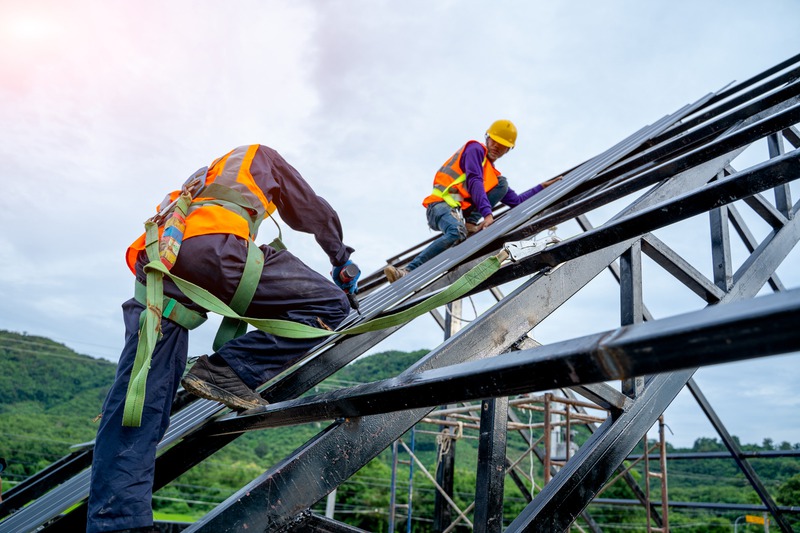When we think about caring for our homes, we often focus on the interior – the spaces where we spend most of our time. However, the outside of your home deserves just as much attention, especially when it comes to the siding. Whether it’s combating the elements or giving your house a fresh, appealing look, your home’s siding plays a vital role. Deciding when to replace it is an important decision that can affect not only the aesthetics of your house but also its long-term structural integrity.
Key Factors in Siding Replacement Frequency
We’ve all asked ourselves at some point – how often should I be replacing my home’s siding? Well, there’s no one-size-fits-all answer here. It depends on several variables including the type of material your siding is made from, the climate you live in, and how well you maintain it. Let’s get into the details of when to consider giving your home’s exterior a makeover.
Type of Siding Material
Different siding materials have different lifespans. Vinyl, for instance, is popular because it’s affordable and durable, typically lasting about 20 to 40 years. Wood siding ranges widely from 15 to 40 years, depending on the type of wood and maintenance. Aluminum siding can last 30 years or more, while fiber cement often comes in strong with the potential to last about 50 years.
Climate and Weather Exposure
Your local climate plays a significant role in the longevity of your siding. If you live in an area with harsh winters, driving rains, or baking-hot summers, these conditions can shorten the lifespan of your exterior siding. Frequent storms, hail, and fluctuating temperatures wear out siding materials more quickly.
Maintenance and Upkeep
Regular maintenance can prolong the life of your siding. This includes cleaning, painting or sealing, and promptly repairing any damage. Neglecting small issues like cracks or rot can turn minor problems into major expenses. Keep an eye out for signs of trouble and address them quickly to extend your siding’s lifespan.
Signs of Damage and Wear
-
Cracks and gaps
-
Warping or buckling
-
Fading and discoloration
-
Increased heating or cooling bills
-
Moisture or water damage
-
Pest infestations
If you notice any of these issues, call in a professional and consider replacing your siding.
Matching Siding to Your Environment
Some siding materials are better suited to certain environments. For example, vinyl siding can resist moisture-related issues, making it a good choice for humid climates. Fiber cement, on the other hand, is known for its resistance to fire, pests, and rot, which can be beneficial if you live in areas prone to wildland fires or termite problems.
Advancements in Siding Technology
Over time, siding manufacturing has evolved. Newer materials and technologies offer improved durability, energy efficiency, and aesthetic options. If your siding is several decades old, upgrading to a modern material might be a smart choice, even if your current siding still has a few years left in it. Additionally, for those considering home improvements, asphalt shingles roofing Clarksville residents trust is another excellent option to enhance both the durability and appearance of your home.
When to Consider Siding Replacement
The right time to replace your siding depends on several factors. If your siding is over 20 years old, it’s probably wise to evaluate its condition. But if you’re noticing extensive damage, increased energy bills, or a need to improve curb appeal for a sale, you might want to replace it sooner rather than later.
Energy Efficiency and Cost Savings
New siding can offer better insulation and reduce air leakage, which can significantly save energy bills. Plus, with advancements in siding materials, you could get a more energy-efficient option that reflects heat or retains warmth, depending on your local climate needs.
Boosting Curb Appeal and Home Value
Replacing your siding can drastically enhance the look of your home, boosting curb appeal and increasing your home’s market value. It’s a substantial investment that can pay off if you’re considering selling shortly.
Pairing Siding and Roof Replacement
If you’re also considering replacing your roof, it might be a smart move to pair the two projects. A roofing company Clarksville TN, can guide you in choosing complementary materials and colors. This coordination can improve the overall aesthetic and structural integrity of your home.
Warranty and Longevity Considerations
Consider the warranty on your current siding. Warranties can be a good guide to the expected lifespan of your siding material. If your warranty is nearing its end, it could be time to invest in new siding.
Working with Local Contractors
When you’re ready for siding replacement, it’s beneficial to work with local experts who understand the specific needs of your area. Contractors that offer quality Clarksville siding materials and the prevailing weather conditions can provide tailored advice and service.
Making the Decision to Replace Your Siding
Wise homeowners know that siding isn’t just a backdrop to your outdoor garden party; it’s a critical component of your home’s defense system. The decision to replace your siding shouldn’t be taken lightly. Evaluate the age of your current siding, check for signs of wear and damage, and consider the potential benefits of the latest siding materials.
Getting a Professional Inspection
Consider getting a professional inspection to get a clear picture of your siding’s condition. This can reveal underlying issues you might not have noticed and provide you with more information to make the right choice.
Consider Your Budget and Timing
While replacing your siding is a significant financial commitment, it’s an investment in your home’s future. Consider your budget carefully, and don’t rush into a decision. Some homeowners save up and plan their replacement projects during off-peak seasons when contractors offer better rates.
Think Long-Term
Remember that, while upfront costs are an important factor, you should also think about long-term value. The right siding material can save you money in maintenance and energy costs over the years and could contribute to a higher resale value for your home.
Final Thoughts
There needs to be a set timeline for replacing home siding; it depends on the material, upkeep, and climate. Evaluate the age, wear, energy efficiency, and home value to decide when to upgrade. Considering these factors, you can choose the ideal time for new siding. This upgrade will enhance your home’s beauty and protection against weather, ensuring it remains a haven for years.





